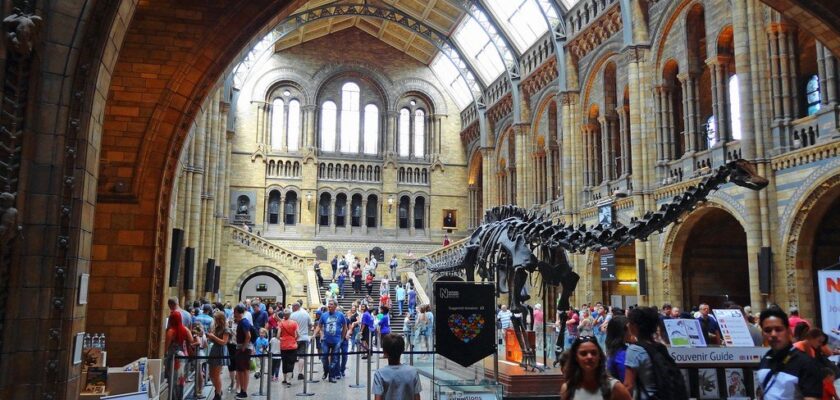Natural History Museum in London
The Natural History Museum is an internationally renowned museum, one of the largest in London, located in South Kensington. The Natural History Museum’s exhibition is housed in a Victorian building decorated with wrought iron and stone carvings. The biggest attraction is the old favorites, the dinosaurs.
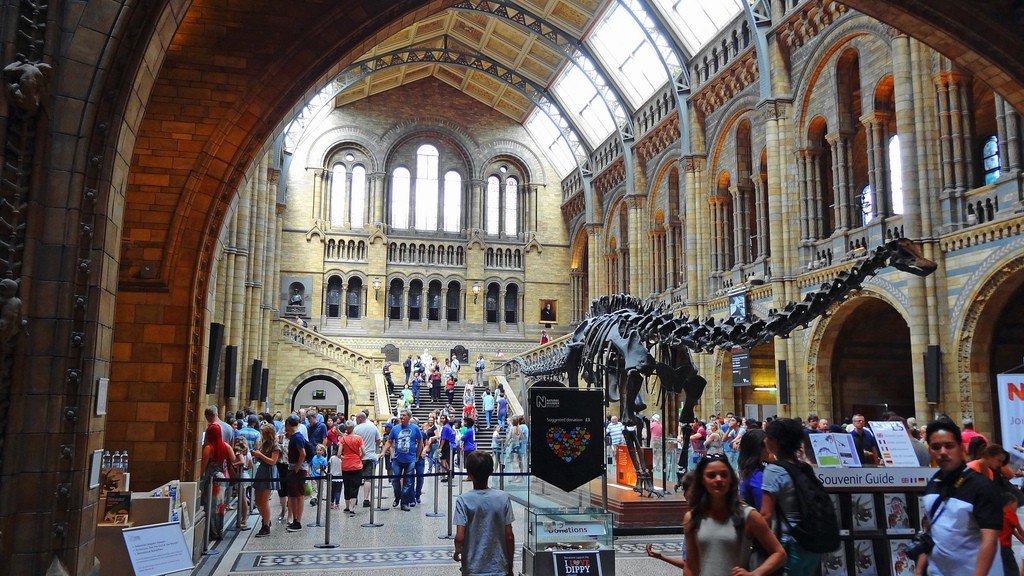
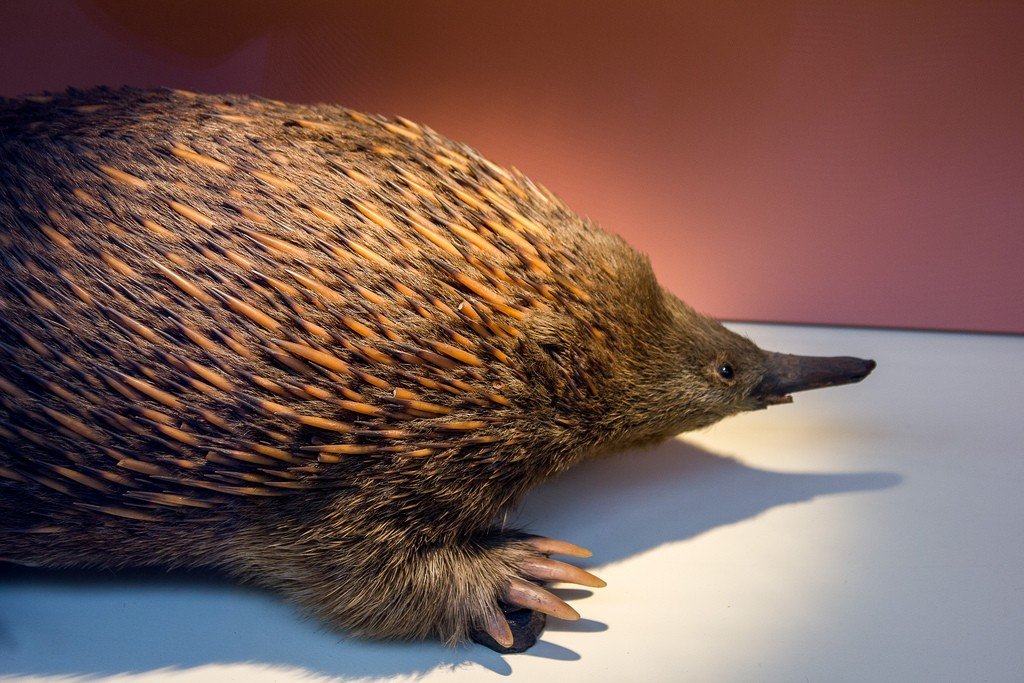
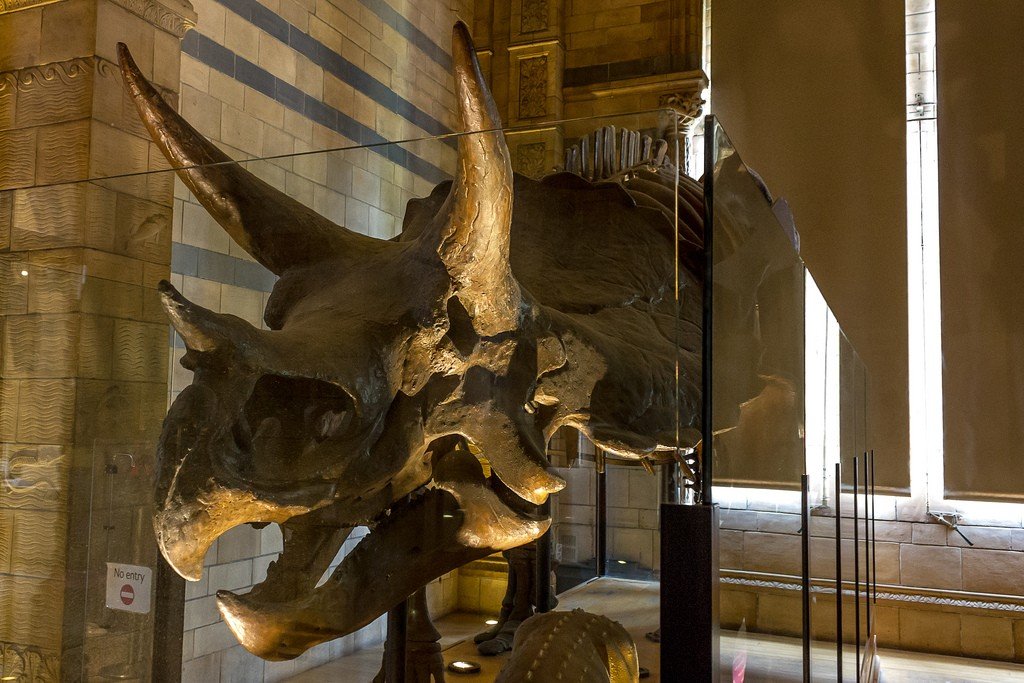
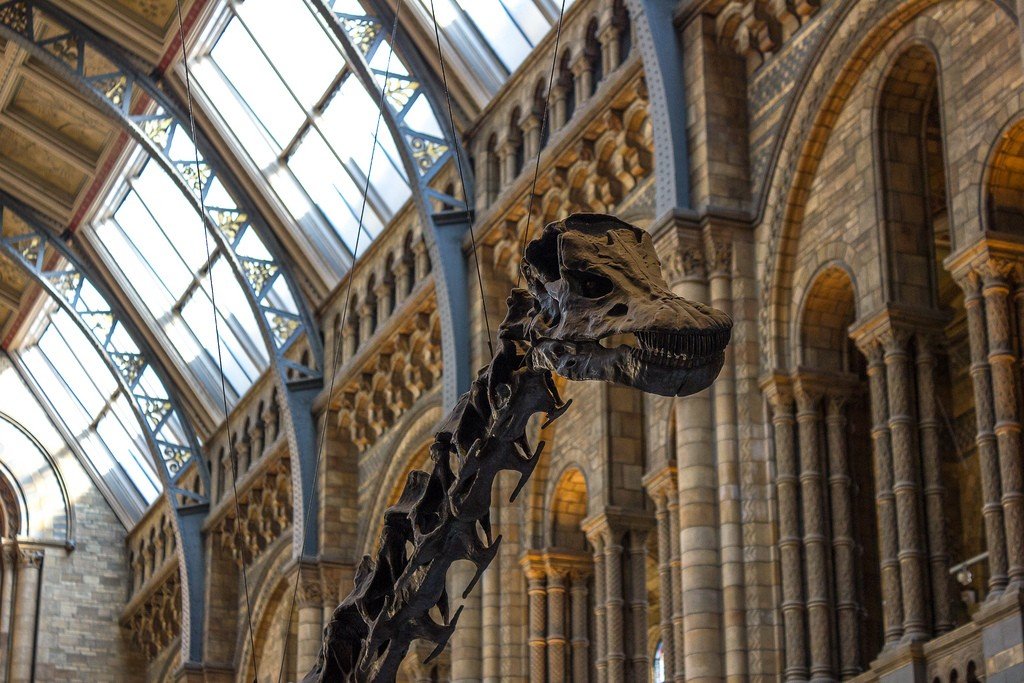
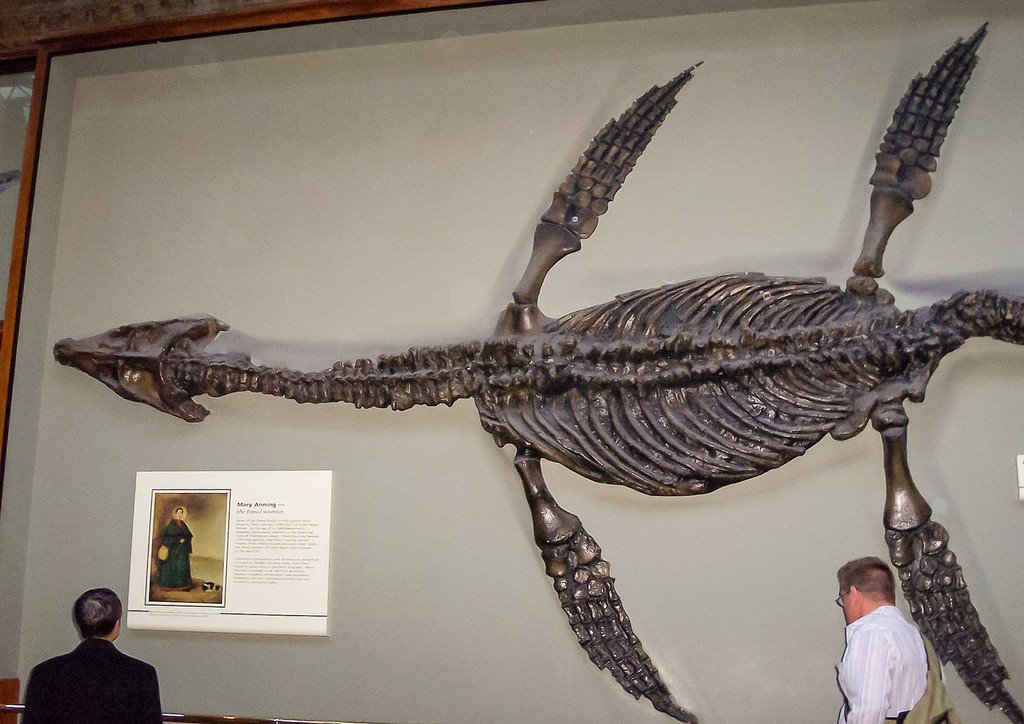

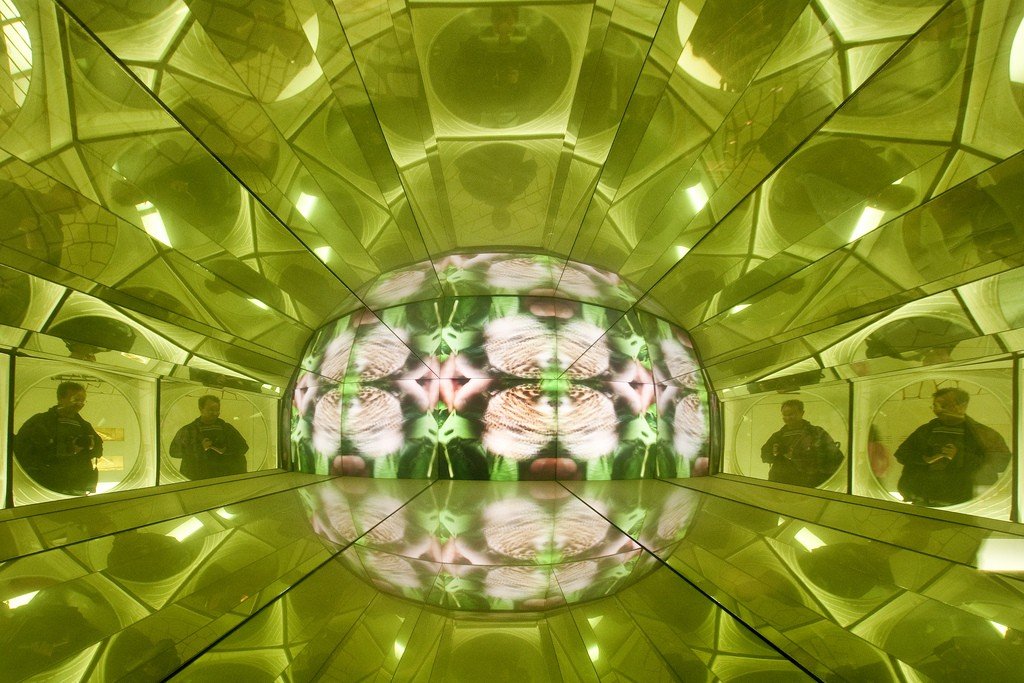
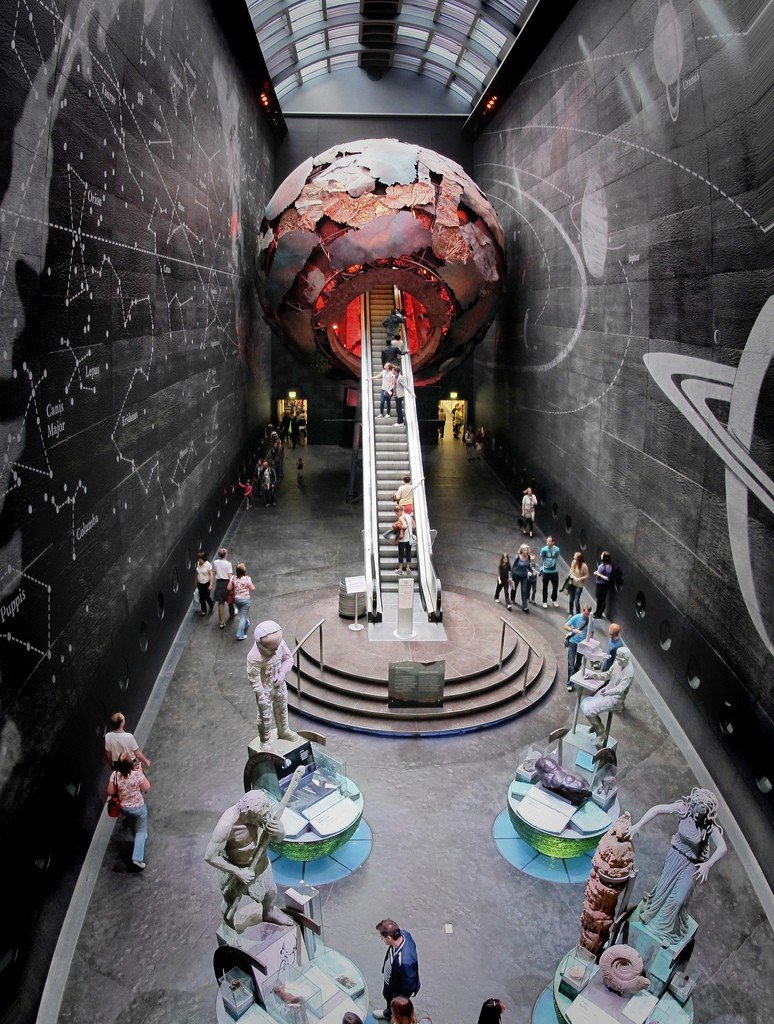
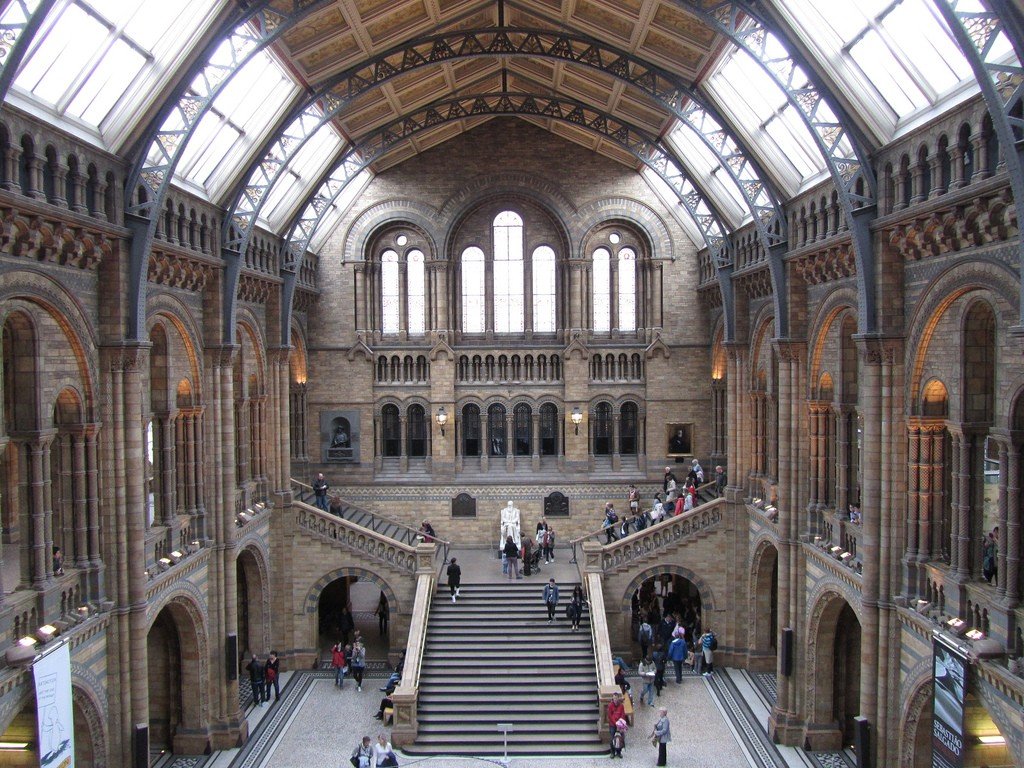
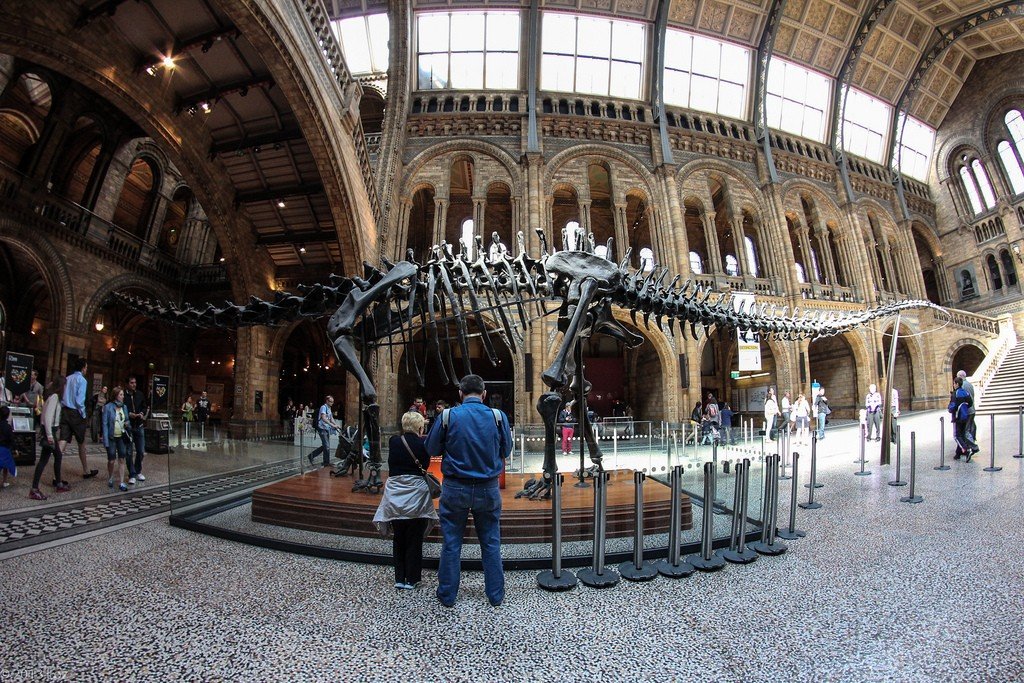
General Information
The Natural History Museum’s collection includes more than 70 million exhibits on botany (6 million plants), zoology (55 million animal specimens, half of which are insects in the entomology department), mineralogy (500,000 rocks and minerals) and paleontology (9 million remains).
.While the exposition used to consist of shelves with rows of glass flasks stacked on top of each other (although there are many of them even now), the museum is now modernized and divided into sections.
.www.nhm.ac.ukTel: 020-7942 5000The museum is open from 10.00am to 5.50pmNearest tube station is South Kensington
“Earth Galleries”
If you use the side entrance off Excision Road opposite the Victoria and Albert Museum, passing under the sign: ‘Geological Survey and Museum’ (former name), you will enter the ‘Earth Galleries’. Passing huge statues on crystal stands, walk up to an escalator that takes you up through a hollow model of the Earth to the “Internal Energy” section, where the rumblings of erupting volcanoes and earthquakes can be heard.
.“Galleries of Life”
A very different atmosphere prevails in the beautiful Waterhouse Mansion, where traditional exhibits in glass cases of the “look and wonder” type are successfully combined with ultra-modern ones. In Gallery 33, visitors get goosebumps when they see details of tick or locust organisms or spiders catching flies. In Gallery 32, you’ll see an amazing “video wall” that shows the water cycle in nature. From here, make your way to the tastefully designed “Ecology” section, where you’ll be given a visual explanation of how different life systems interact.
.
Gallery 21 showcases the always popular dinosaurs, which can be viewed either from special bridges or by standing at their very feet. This is a favorite spot for children. Especially popular is the animated display where three Deinonychus devour one Tenontosaurus with appropriate rumbling and squealing. Galleries 23 and 24 display mammals, both land mammals, from wild pig to chamois, and marine mammals.
.